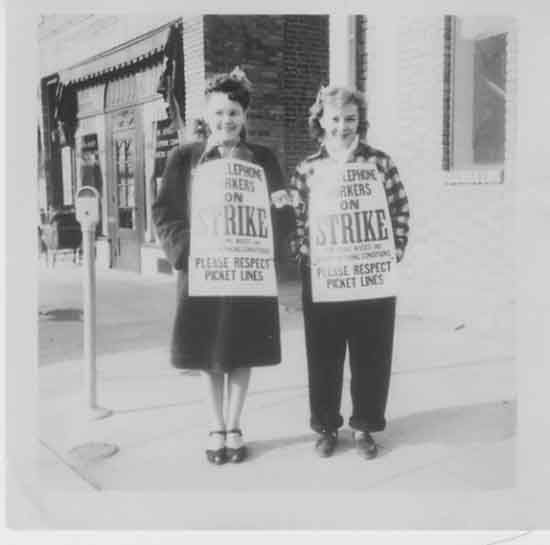This Day in Labor History: April 7, 1947

On April 7, 1947, telephone operators for the major phone companies walked off the job. This action was the precursor to the formation of the Communication Workers of America, one of the most important unions in the nation today.
Telephone operators struggled with low pay. A large chunk of the workforce, since telephones required the direct connections of lines, it was also dominated by women. As per always, certain types of work are defined as “women’s work” precisely so employers can pay them less and have greater control over their workers’ lives. Teachers are a great example of this. In the early 19th century, most teachers, even for small children were men. But this transitioned to a woman’s job, at least for the young, through the 19th century because it allowed schools to pay workers less and the creation of moral codes to guide teachers. That included firing them once they got married and it meant that low pay would be the coin of the realm and the teachers would have little control over their lives. Telephone operators did not have the same moral restrictions as 19th century teachers of course, but this job was defined as female for much the same reason.
The period immediately after World War II was one of greater worker activity, much of it sparked by women who wanted economic autonomy over their own lives. The 1946 Oakland General Strike, for instance, began with women in department stores, even if men took it over. Women working for the big phone companies were in the same boat. AT&T, Bell, the New York Telephone Company–all of these paid the workers very low wages. About 95 percent of the operators were women and 72 percent of the workers in the industry as a whole were women.
In April 1947, the National Federation of Telephone Workers, which represented the operators, among others, took 350,000 workers out on strike. Of these, 230,000 were women. The NFTW wasn’t much of a union. It was more of a weak federation that had brought in a whole bunch of former company unions and other smaller unions after the Wagner Act ended company unionism. So it didn’t have much authority or centralized power over its locals. The strike wasn’t particularly well planned or organized. This action lasted five weeks, costing the telephone companies over 10 million man hours (or woman hours, more accurately) of labor. The union had a lot of outside support. Both the American Federation of Labor and Congress of Industrial Organizations gave significant support to the NFTW for this, hoping to bring these and other women workers into their respective federation. This allowed for a reasonably robust strike fund that meant the companies couldn’t effectively starve strikers into submission, their preferred strategy for ending strikes. Some of the workers stayed out a full five weeks thanks to this funding.
Some of the locals were in fact pretty strong. The Washington, D.C. local had engaged in dozens of smaller actions over the past few years, many of them the short wildcat (unauthorized) strikes that defined workplace activism during the no-strike clause of World War II. So it managed to hold together quite strongly and shut off phone service to the White House and Capitol building.
On April 30, New York Telephone Company caved and 40,000 workers returned to their jobs the next day. Bell settled with their maintenance workers as well, bringing 6,000 workers back, though with only a $4 daily wage gain instead of the $12 they demanded. This was part of the problem with the NFTW. It simply did not have the ability to control its own locals from making its own side deals. And the NFTW did not really win against AT&T. That company was able to run most of their phones without the striking operators. It was fine with the workers striking because it had a strong plan to win and avoid what it did not want, which was an industry standard contract. In fact, it refused to make any wage offers for the first three weeks of the strike and then it made all those wages offers for the particular unit of workers themselves, saying that the offer was null and void if they even ran it by the NFTW. By the time the NFTW called off the strike, seventeen locals had signed their own deals. That union was finished. However, the walkout and the limited success of some of the locals to win gains did maintain the principle of collective bargaining in the industry.
But the companies had overplayed their hand. In the aftermath of the strike, the NFTW dissolved and reformed as the Communication Workers of America in June 1947, a stronger union that could function as a modern labor organization. The CWA joined the CIO in 1949 and became a pretty militant union for the rights of telephone workers, first coming onto the national scene in a 1955 strike against Southern Bell when the company tried to break the union. CWA won that strike and solidified itself as a powerful labor organization. Today, it has around 545,000 members, making it the 12th largest union in the United States. It has also engaged in many of the most significant strikes in recent years, especially in the years before the recent strike wave. That means that during the 2011 and 2016 Verizon strikes, it was a rare beacon of labor militancy in a movement that was striking only rarely.
This is the 353rd post in this series. Previous posts are archived here.


